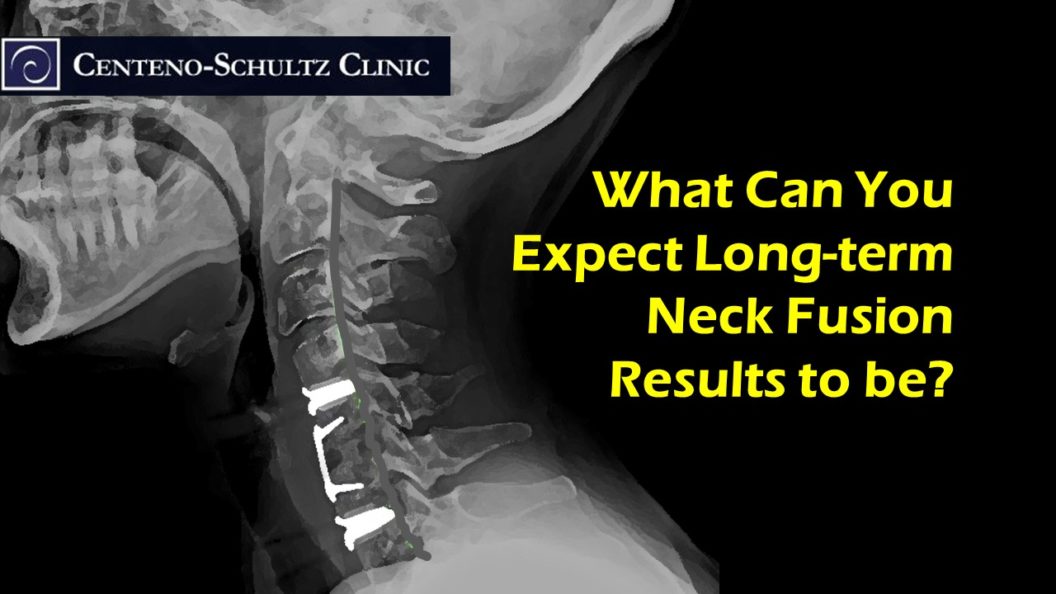We could title today’s post with a number of questions: Do I really need a neck fusion? Does neck fusion surgery really work? What complications can I expect following a neck fusion? However, the answers to all of these boils down to, neck fusion may be creating more problems than it actually solves.
In fact neck fusion is a surgery Dr. Centeno would put into the category damage to accomplish a goal. And when the damage caused by the surgery is too disabling to fully accomplish the goal of the surgery, it’s creating more problems than it solves. In most cases, this defines neck fusion.
What Is a Neck Fusion?
The top 7 vertebrae of the spine collectively make up the cervical spine, and this portion of the spine makes up the neck. As such, it directly balances the head and supports a great deal of head and neck movement, left and right, side to side, and front and back. The spine, in general, is made for movement, and the purpose of a fusion at any level is to stop movement. A fusion can be particularly disruptive when it stops movement in the cervical spine, which is the most movable part of the spine.
A fusion involves removing the disc between two or more vertebrae and installing hardware (e.g., screws, rods, plates) into the vertebrae to bolt them tightly together and force the two bones to fuse (or grow into one solid bone). Naturally, this stops movement in that segment of the spine and puts adjoining segments under a great deal of stress, increasing the risk of damage to those segments (a condition called adjacent segment disease [ASD]).
Neck Fusion May Straighten the Natural Low-Back Curve
It’s also important to understand that the spine is one interconnected structure, from the first vertebra at the top of the neck all the way down to the sacrum and coccyx that form the tailbone. So when damage occurs in one part of the spine, it can disrupt the stability and gentle curves of the spine and eventually create problems in other parts of the spine. This is true even if that damage is surgical damage to accomplish a goal—a cervical fusion, for example, can create problems in the low back and even into the pelvis.
Besides ASD, another problem introduced by a surgical fusion is a disruption to the natural cervical curve. When the cervical curve is disrupted, this can progressively disrupt the gentle counterbalancing curves all the way down the spine and into the low back, even changing the angle of the tailbone. Why is this a problem?
The straightening of the back curves after a neck fusion puts more weight directly onto the discs and other supporting spinal structures. This can eventually degenerate the discs, create disc bulges or herniations, irritate nerves, and more. Whether it’s ASD or straightening curves, either may put you at risk for more surgery down the road.
Avoiding Neck Fusion or More Fusions
At Centeno-Schultz Clinic, we see many, many patients who have been told by a surgeon that they need a neck fusion. Many of these patients are able to avoid fusion surgery by using advanced regenerative medicine solutions (and even if you’ve already had a fusion, this may be a possibility for avoiding more fusions). While there are extreme neck injury cases that might actually require a neck fusion, it’s important to find a surgeon who understands the importance of retaining the normal neck curve. Some surgeons now do pay attention to this, though there are very few out there. Avoiding surgery, if possible, however, should be the primary goal.
Just remember, the spine is one interconnected unit in one interconnected body. And using surgical damage to accomplish a goal by fusing the cervical spine may only create more problems than it solves by causing damage further down the spine.




